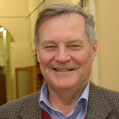Trends and Prospects in High Energy Physics
A special issue of Physics (ISSN 2624-8174). This special issue belongs to the section "High Energy Physics".
Deadline for manuscript submissions: closed (30 June 2019) | Viewed by 31593
Special Issue Editors
2. Department of Physics, The University of Texas at Arlington, Arlington, TX 76019, USA
Interests: high-energy physics (in particular, multihadron production, quantum chromodynamics, and physics beyond the Standard Model); astroparticle physics; gravitation; cosmology; complex systems and critical phenomena; probability and statistics
Special Issues, Collections and Topics in MDPI journals
Interests: hadron interactions; multiparticle production; cosmic-ray physics; fractals; quantum chromodynamics; phase transitions; heavy quarkonia spectroscopy; low-x physics; wavelet analysis and its applications; pattern recognition
Special Issues, Collections and Topics in MDPI journals
2. INFN, Laboratori Nazionali del Gran Sasso, 67010 Assergi, AQ, Italy
Interests: particle physics; cosmology
Special Issues, Collections and Topics in MDPI journals
Special Issue Information
Dear Colleagues,
High-energy physics covers a wide area of modern physics. This includes particle and nuclear physics, astroparticle physics, cosmic rays, cosmology, and astrophysics. Studies in high-energy particle physics attract great interest; modern experiments such as those at LHC at CERN, and neutrino experiments, investigate the micro world to understand the basics of nature, to distinguish among existing theories, and to discover new features and new particles. Heavy-ion studies aim to investigate new states of matter and provide links between particle physics and astrophysics. Investigations into astroparticle physics, cosmic rays, and cosmology represent a broad range of studies, from investigations of particle creation to the creation of the universe.
We invite original research articles and reviews on the above-described topics to contribute to this Special Issue.
Prof. Dr. Edward Sarkisyan-Grinbaum
Prof. Igor M. Dremin
Prof. Zurab Berezhiani
Guest Editors
Manuscript Submission Information
Manuscripts should be submitted online at www.mdpi.com by registering and logging in to this website. Once you are registered, click here to go to the submission form. Manuscripts can be submitted until the deadline. All submissions that pass pre-check are peer-reviewed. Accepted papers will be published continuously in the journal (as soon as accepted) and will be listed together on the special issue website. Research articles, review articles as well as short communications are invited. For planned papers, a title and short abstract (about 100 words) can be sent to the Editorial Office for announcement on this website.
Submitted manuscripts should not have been published previously, nor be under consideration for publication elsewhere (except conference proceedings papers). All manuscripts are thoroughly refereed through a single-blind peer-review process. A guide for authors and other relevant information for submission of manuscripts is available on the Instructions for Authors page. Physics is an international peer-reviewed open access quarterly journal published by MDPI.
Please visit the Instructions for Authors page before submitting a manuscript. The Article Processing Charge (APC) for publication in this open access journal is 1400 CHF (Swiss Francs). Submitted papers should be well formatted and use good English. Authors may use MDPI's English editing service prior to publication or during author revisions.
Articles with original results are most welcome, as are contributions of a review type of earlier publications or widely extended versions of the latter completed with new results and/or extensively updated.
Keywords
- high-energy physics
- particle physics
- neutrino physics
- astrophysics
- heavy-ion physics
- astroparticle physics
- cosmology
- cosmic rays







